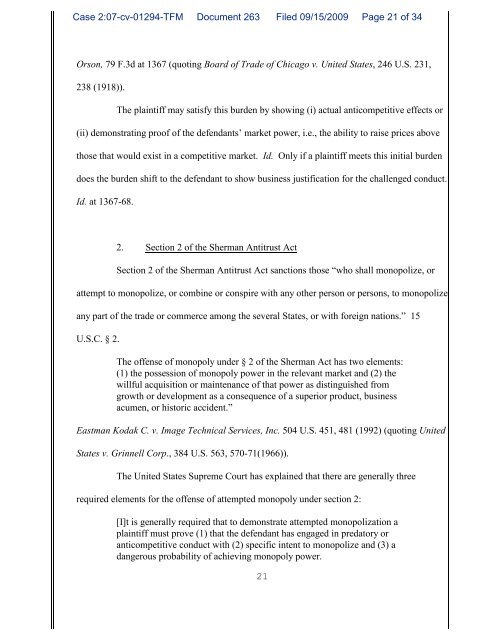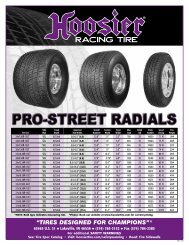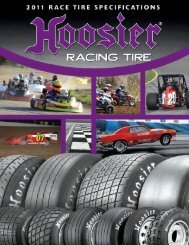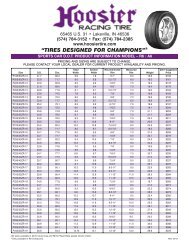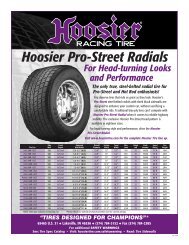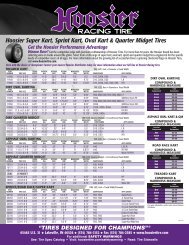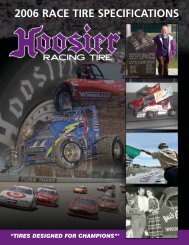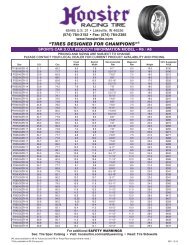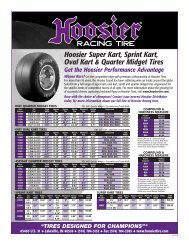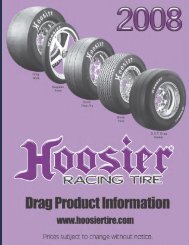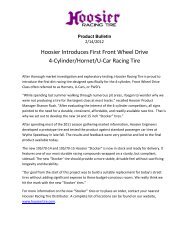in the united states district court for the - Hoosier Racing Tire
in the united states district court for the - Hoosier Racing Tire
in the united states district court for the - Hoosier Racing Tire
You also want an ePaper? Increase the reach of your titles
YUMPU automatically turns print PDFs into web optimized ePapers that Google loves.
Case 2:07-cv-01294-TFM Document 263 Filed 09/15/2009 Page 21 of 34<br />
Orson, 79 F.3d at 1367 (quot<strong>in</strong>g Board of Trade of Chicago v. United States, 246 U.S. 231,<br />
238 (1918)).<br />
The pla<strong>in</strong>tiff may satisfy this burden by show<strong>in</strong>g (i) actual anticompetitive effects or<br />
(ii) demonstrat<strong>in</strong>g proof of <strong>the</strong> defendants’ market power, i.e., <strong>the</strong> ability to raise prices above<br />
those that would exist <strong>in</strong> a competitive market. Id. Only if a pla<strong>in</strong>tiff meets this <strong>in</strong>itial burden<br />
does <strong>the</strong> burden shift to <strong>the</strong> defendant to show bus<strong>in</strong>ess justification <strong>for</strong> <strong>the</strong> challenged conduct.<br />
Id. at 1367-68.<br />
2. Section 2 of <strong>the</strong> Sherman Antitrust Act<br />
Section 2 of <strong>the</strong> Sherman Antitrust Act sanctions those “who shall monopolize, or<br />
attempt to monopolize, or comb<strong>in</strong>e or conspire with any o<strong>the</strong>r person or persons, to monopolize<br />
any part of <strong>the</strong> trade or commerce among <strong>the</strong> several States, or with <strong>for</strong>eign nations.” 15<br />
U.S.C. § 2.<br />
The offense of monopoly under § 2 of <strong>the</strong> Sherman Act has two elements:<br />
(1) <strong>the</strong> possession of monopoly power <strong>in</strong> <strong>the</strong> relevant market and (2) <strong>the</strong><br />
willful acquisition or ma<strong>in</strong>tenance of that power as dist<strong>in</strong>guished from<br />
growth or development as a consequence of a superior product, bus<strong>in</strong>ess<br />
acumen, or historic accident.”<br />
Eastman Kodak C. v. Image Technical Services, Inc. 504 U.S. 451, 481 (1992) (quot<strong>in</strong>g United<br />
States v. Gr<strong>in</strong>nell Corp., 384 U.S. 563, 570-71(1966)).<br />
The United States Supreme Court has expla<strong>in</strong>ed that <strong>the</strong>re are generally three<br />
required elements <strong>for</strong> <strong>the</strong> offense of attempted monopoly under section 2:<br />
[I]t is generally required that to demonstrate attempted monopolization a<br />
pla<strong>in</strong>tiff must prove (1) that <strong>the</strong> defendant has engaged <strong>in</strong> predatory or<br />
anticompetitive conduct with (2) specific <strong>in</strong>tent to monopolize and (3) a<br />
dangerous probability of achiev<strong>in</strong>g monopoly power.<br />
21


